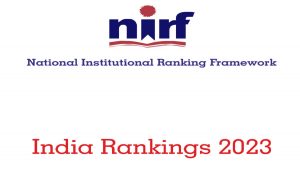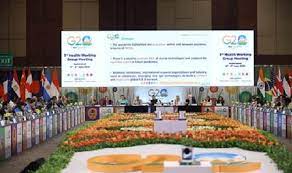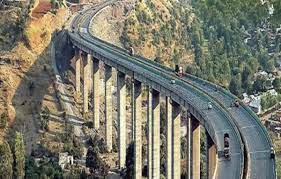Today’s Current Affairs: 7th Jun 2023 for UPSC IAS exams, State PSC exams, SSC CGL, State SSC, RRB, Railways, Banking Exam & IBPS, etc
Table of Contents
Peer-To-Peer (P2P) Lending:

After digital payments and digital lending, the Reserve Bank of India is looking closely at platforms that facilitate direct, or peer-to-peer (P2P), lending between individuals.
- Peer-to-Peer (P2P) lending is done through a website that connects borrowers and lenders directly.
- Those who want to lend money, open an account with a P2P platform as a lender. And those who require a loan register themselves as a borrower.
- It enables individuals to obtain loans directly from other individuals, cutting out the financial institution as the middleman.
- In 2017, the Reserve Bank of India brought this service under its regulatory purview.
- Only an NBFC can register as a P2P lender with the permission of RBI. Every P2P lender should obtain a certificate of registration from the RBI.
- The minimum capital requirement to set up a P2P platform is fixed at Rs. 2 Crores.
National Institutional Ranking Framework (NIRF) 2023:

The Minister of State for Education released the National Institutional Ranking Framework (NIRF) 2023.
Highlights of NIRF 2023:
- Indian Institute of Technology Madras retains its 1st position in Overall Category and Engineering.
- Indian Institute of Science, Bengaluru tops the Universities Category and stood first in Research Institutions Category.
- IIM Ahmedabad tops in Management subject retaining its first position.
- All India Institute of Medical Sciences (AIIMS), New Delhi occupies the top slot in Medical.
- National Law School of India University, Bengaluru retains its first position.
- Indian Agricultural Research Institute, New Delhi takes the top slot in Agriculture and Allied Sectors.
- Three distinct additions to the 2023 edition of India Rankings are as follows:
- Introduction of a new subject namely Agriculture & Allied Sectors.
- Integration of the “Innovation” ranking previously executed by the Atal Ranking of Institutions on Innovation Achievements (ARIIA) into the India Rankings to reduce the burden on institutions of providing similar data to two different agencies.
- Expansion of scope of “Architecture” to “Architecture and Planning” to include institutions imparting courses in Urban and Town Planning.
- With the addition of these the existing portfolio of India Rankings has increased to 13 categories and subject domains that have been ranked in India Rankings 2023.
- It ranks Overall, University, Colleges, Research Institutions & Innovation and also 8 subject domains, namely Engineering, Management, Pharmacy, Architecture & Planning, Medical, Law, Dental Agriculture and Allied Sectors.
- Five broad categories of parameters are identified in the NIRF: Teaching, learning and resources (TLR); research and professional practice; graduation outcome; outreach; and inclusivity and perception.
Exercise Ekatha:

Indian Navy divers and Marine Commandos are in the Maldives for the sixth edition of Exercise Ekatha.
- Exercise Ekatha is an annual exercise conducted between the navies of India and Maldives.
- Objective is to enhance interoperability in diving and special operations.
- The location of the Maldives, at the intersection of commercial sea-lanes running through the Indian Ocean, makes it strategically important for India, particularly in the light of China’s growing aggression in the region.
- India was among the first to recognise Maldives after its independence in 1965 and to establish diplomatic relations with the country.
- India established its mission at the level of CDA in 1972 and resident High Commissioner in 1980
- Maldives opened a full fledged High Commission in New Delhi in November 2004, at that time one of its only four diplomatic missions worldwide.
- India and Maldives signed a trade agreement in 1981, which provides for export of essential commodities.
- Since 1988, defence and security have been major areas of cooperation between India and Maldives.
- India provides the largest number of training opportunities for Maldivian National Defence Force (MNDF), meeting around 70 per cent of their defence training requirements.
- In 2016, the two countries also signed a comprehensive action plan to consolidate defence partnership.
Bitumen : Major Cause Of Pollution

Goa Power Minister recently said that bitumen used in road construction is a major cause of pollution.
- Bitumen is a dense, highly viscous, petroleum-based hydrocarbon.
- It is found in deposits such as oil sands and pitch lakes(natural bitumen) or is obtained as a residue of the distillation of crude oil.
- At the temperatures normally encountered in natural deposits, bitumen will not flow. In order to be moved through a pipe, it must be heated and, in some cases, diluted with a lighter oil.
- Bitumen can deform permanently under heavy loads. Continued stress on the material can result in cracking
- It owes its density and viscosity to its chemical composition—mainly large hydrocarbon molecules known as asphaltenes and resins, which are present in lighter oils but are highly concentrated in bitumen.
- In addition, bitumen frequently has a high content of metals, such as nickel and vanadium, and nonmetallic inorganic elements, such as nitrogen, oxygen, and sulfur.
- Bitumen is known for its waterproofing and adhesive properties and is commonly used in the construction industry, notably for roads and highways.
- It is commonly used to waterproof boats and other marine vessels.
- It is also used by companies that create and manufacture roofing products.
- It is used for sealing and insulating purposes in various building materials such as carpet tile backing and paint.
International Renewable Energy Agency Report:

A recent report called ‘Low-cost finance for energy transition,’ released by the International Renewable Energy Agency (IRENA), has recognized and praised India’s outstanding progress in expanding its renewable energy capacity.
- The report describes India’s achievements as “unprecedented”.
- India aims to achieve 175 GW (100 GW from solar, 60 GW from wind) of renewable energy capacity by 2022 and 500 GW of non-fossil fuel capacity by 2030.
- India aims to achieve net-zero greenhouse gas emissions by 2070, requiring an estimated $10 trillion of investment.
- India ranked third on the index in 2021, showcasing its commitment to renewable energy development
- India possesses the fourth-largest solar and wind power base globally, experiencing rapid growth.
- The Indian government’s comprehensive policies have effectively supported the achievement of national targets.
- IREDA (Indian Renewable Energy Development Agency) has played a crucial role in commissioning approximately 20 GW of renewable energy capacity through financing to developers.
- Green bonds attract private sector investment, reducing the cost of capital for green projects.
- Overall green bond issuance in India has reached $18.3 billion cumulatively, with a record issuance of $7 billion in 2021
- IREDA has promoted emerging technologies such as battery energy storage systems, green hydrogen electrolysers, e-mobility, and waste-to-energy through innovative financing policies.
- The Indian government’s sovereign bond issuance aims to reduce supply from non-green bonds, lowering overall bond yields.
- Local banks and insurance companies predominantly purchased the bonds, with some foreign bank involvement.
- Green bond investments qualify towards the Reserve Bank of India’s statutory liquidity ratio and are classified as infrastructure investments by insurance companies.
- Investment in sovereign green bonds is categorized as specified securities, allowing unlimited investment by foreign investors.
3rd Health Working Group Meeting:

The recent 3rd Health Working Group meeting at Hyderabad, Telangana under the G20 India Presidency highlighted the ongoing threat of pandemics and the urgent need for global collaboration in the health sector.
Highlights:
- India proposed a Global initiative on Digital Health, a WHO-managed network to converge ongoing initiatives in use of technology in the global health arena.
- This initiative can enable bridging the digital divide amongst nations and ensure that the fruits of technology are made available to every citizen of the world.
- Building consensus for an end-to-end Global Medical Countermeasure (MCM) ecosystem.
- Creation of an interim platform guided by the Intergovernmental Negotiating Body (INB) process for the Global Medical Countermeasure (MCM) ecosystem.
- Advocating against intellectual property rights barriers that hinder access to medical countermeasures in times of crisis.
- Accelerating vaccine research and development (R&D) for emerging pathogens and strengthening pandemic preparedness efforts.
- Establishing a Global Vaccine Research Collaborative to address gaps in vaccine development, enhance coordination, and foster an enabling environment for vaccine R&D.
- Emphasising equity in access to diagnostics, drugs, and vaccines during health emergencies.
- Mapping and integrating global initiatives for quick decision making and planning during crises. Addressing the challenges of zoonotic spillover of diseases transferring from animals to humans.
National E-Commerce Policy:

The Indian government is set to introduce a national e-commerce policy that aims to create a favorable environment for the development of the sector and drive exports.
- The e-commerce policy was first proposed in 2018 and in 2019, a draft of the e-commerce policy was released.
- Department for Promotion of Industry and Internal Trade (DPIIT), the Ministry of Commerce and Industry emphasized the need for a streamlined regulatory framework, technological advancements, and efficient supply chain integration.
- The national e-commerce policy aims to establish a regulatory framework that facilitates ease of doing business in the sector.
- The policy recognizes the significant export potential of India’s e-commerce sector.
- By 2030, India’s e-commerce export potential is estimated to range between 200 billion USD to 300 billion USD annually.
- With global cross-border e-commerce exports projected to reach 2 trillion USD by 2025, India aims to capitalize on this growth opportunity.
- The possibility of establishing a regulator for the e-commerce sector is being considered, but its implementation may take time.
- Local traders’ associations have been advocating for an empowered regulatory body to enforce e-commerce rules and curb violations.
- While 100% foreign direct investment (FDI) is allowed in the marketplace model, FDI is not permitted in the inventory-based model.
- Traders have expressed concerns regarding the violation of e-commerce rules, such as deep discounts and preferences given to select sellers.
- The policy intends to clarify these issues and provide greater transparency in the rules governing FDI in e-commerce.
- The Consumer Protection (e-commerce) Rules 2020 and proposed amendments will be aligned with the e-commerce policy for consistency.
- The e-commerce policy will serve as an overarching framework for the sector, ensuring coherence among various governing acts.
- The sector is governed by the FDI policy, the Consumer Protection Act, of 2019, the Information Technology Act of 2000, and the Competition Act, of 2002.
- The policy aims to streamline these regulations and create a conducive environment for the growth of the e-commerce industry.
India’s First International Cruise Vessel MV Empress:

The Union Minister of Ports, Shipping & Waterways and Ayush, flagged off India’s first international cruise vessel, MV Empress, from Chennai to Sri Lanka.
- This significant event marked the inauguration of the international cruise tourism terminal in Chennai, which is a testament to the government’s commitment to enhancing cruise tourism and maritime trade opportunities.
- The MV Empress will sail to three Sri Lankan ports: Hanbantota, Trincomalee, and Kankesanturei.
- The cruise service is the result of a Memorandum of Understanding (MoU) signed between Chennai Port and M/S Waterways Leisure Tourism Pvt Ltd during the first Incredible India International Cruise Conference in 2022.
- The government plans to develop three new international cruise terminals in Andamans, Puducherry, and Lakshadweep, which are expected to be operational by 2024.
- The government envisions an increase in the number of cruise ships from 208 in 2023 to 500 in 2030 and up to 1100 by 2047, with the number of passengers rising from 9.5 lakhs in 2030 to 45 lakhs in 2047.
Beat Plastic Pollution Campaign:

The Tourism department in Kerala has launched the ‘Beat Plastic Pollution’ campaign to maintain the cleanliness and environmental integrity of the state’s beaches.
- The initiative was introduced on World Environment Day as a collaborative effort involving various stakeholders from the tourism sector and local communities.
- As part of the campaign, the local community is being trained to make paper bags and cloth bags as alternatives to plastics, which will not only contribute to environmental conservation but also generate income for the residents.
- Such campaigns illustrate the need for local community participation in combating pollution.
Govt Bans 14 Fixed-Dose Combination Drugs:

The government has banned 14 fixed-dose combination drugs citing there is “no therapeutic justification” for these medicines and that they may involve “risk” to people.
- The decision was taken on the basis of the recommendations of an expert committee and the Drugs Technical Advisory Board.
- Prohibit the manufacture, sale or distribution of this FDC was done under section 26 A of the Drugs and Cosmetics Act, of 1940.
- Fixed-Dose Combination (FDC) drugs are medications that contain two or more active pharmaceutical ingredients (APIs) in a single formulation, to enhance therapeutic outcomes or simplify treatment regimens.
- In 2016, the government announced the ban on the manufacture, sale and distribution of 344 drug combinations after an expert panel, set up at the behest of the Supreme Court had stated they were being sold to patients without scientific data and the order was challenged by the manufacturers in court.
- The currently banned 14 FDCs are part of those 344 drug combinations.
First Sustainability Report For FY 2021-22: National Highways Authority Of India

National Highways Authority of India, has released its first ‘Sustainability Report for FY 2021-22’, showcasing its commitment to environmental sustainability.
- NHAI initiatives for sustainability include:
- Using recycled materials in highway construction,
- including fly-ash and plastic waste;
- Creating over 100 wildlife crossings to protect wildlife and reduce human-animal conflicts;
- Undertaken extensive plantation drives, planting millions of saplings to offset vehicle emissions;
- Increasing employment of women and marginalized communities.
- The Sustainability Report follows the Global Reporting Initiative (GRI) guidelines and has been externally assured by a third party.
- NHAI’s sustainable practices aim to attract ‘Green Finance’ for infrastructure financing and ensure socially and environmentally responsible projects.
NHAI:
- NHAI is a statutory body under the administrative control of the Ministry of Road Transport and Highways.
- est. 1988; HQ: New Delhi
- It has been set up as a Central Authority to develop, maintain and manage the National Highways entrusted to it by the Government of India.




